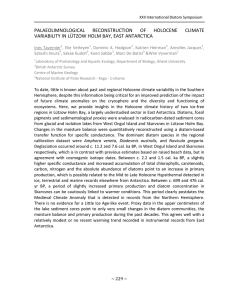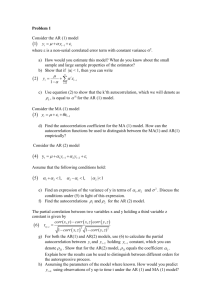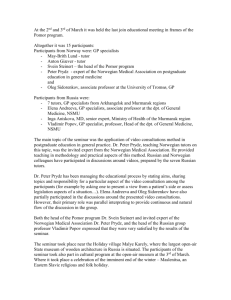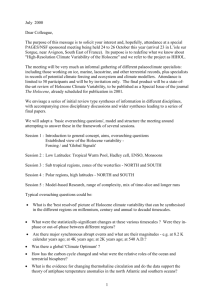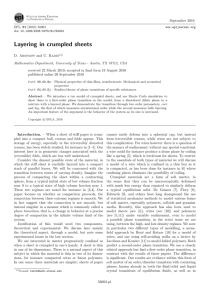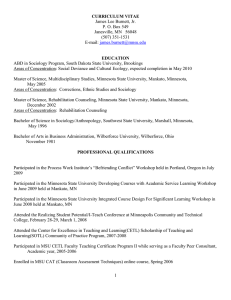A. LATE QUATERNARY CLIMATE HISTORY OF HEART LAKE AND PUP LAGOON Biologic,
advertisement
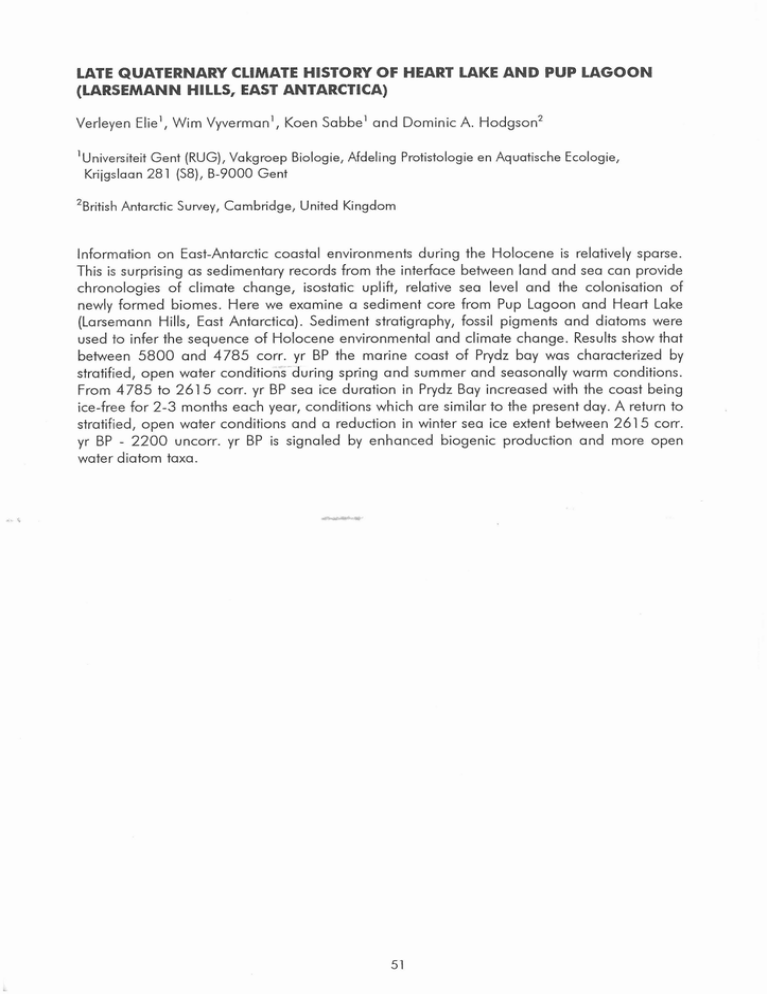
LATE QUATERNARY CLIMATE HISTORY OF HEART LAKE AND PUP LAGOON (LARSEMANN HILLS, EAST ANTARCTICA) Verleyen Eliel, Wim Vyvermanl, Koen Sabbe1 and Dominic A. Hodgson2 '~niversiteitGent (RUG), Vakgroep Biologic, Afdeling Protistologie en Aquatische Ecologie, Kriigslaan 28 1 (S8), 8-9000 Gent 2~ritish Antarctic Survey, Cambridge, United Kingdom Information on East-Antarctic coastal environments during the Holocene is relatively sparse. This is surprising as sedimentary records from the interface between land and sea can provide chronologies of climate change, isostatic uplift, relative sea level and the colonisation of newly formed biomes. Here we examine a sediment core from Pup Lagoon and Heart Lake (Larsemann Hills, East Antarctica). Sediment stratigraphy, fossil pigments and diatoms were used to infer the sequence of Holocene environmental and climate change. Results show that between 5 8 0 0 and 4 7 8 5 corr. yr BP the marine coast of Prydz bay was characterized by stratified, open water conditions-during spring and summer and seasonally warm conditions. From 4785 to 261 5 corr. yr BP sea ice duration in Prydz Bay increased with the coast being ice-free for 2-3 months each year, conditions which are similar to the present day. A return to stratified, open water conditions and a reduction in winter sea ice extent between 261 5 corr. yr BP - 2200 uncorr. yr BP is signaled by enhanced biogenic production and more open water diatom taxa.


